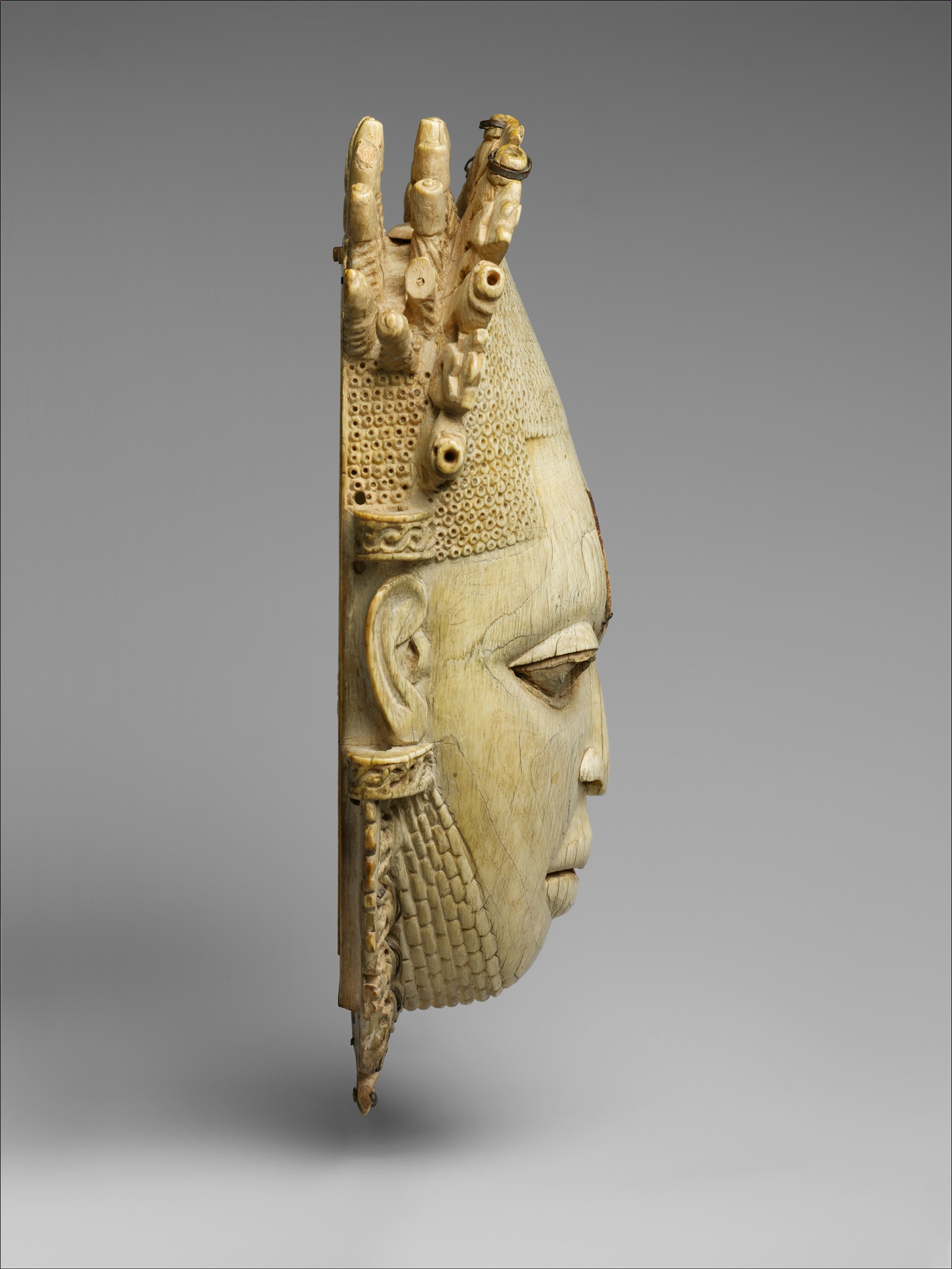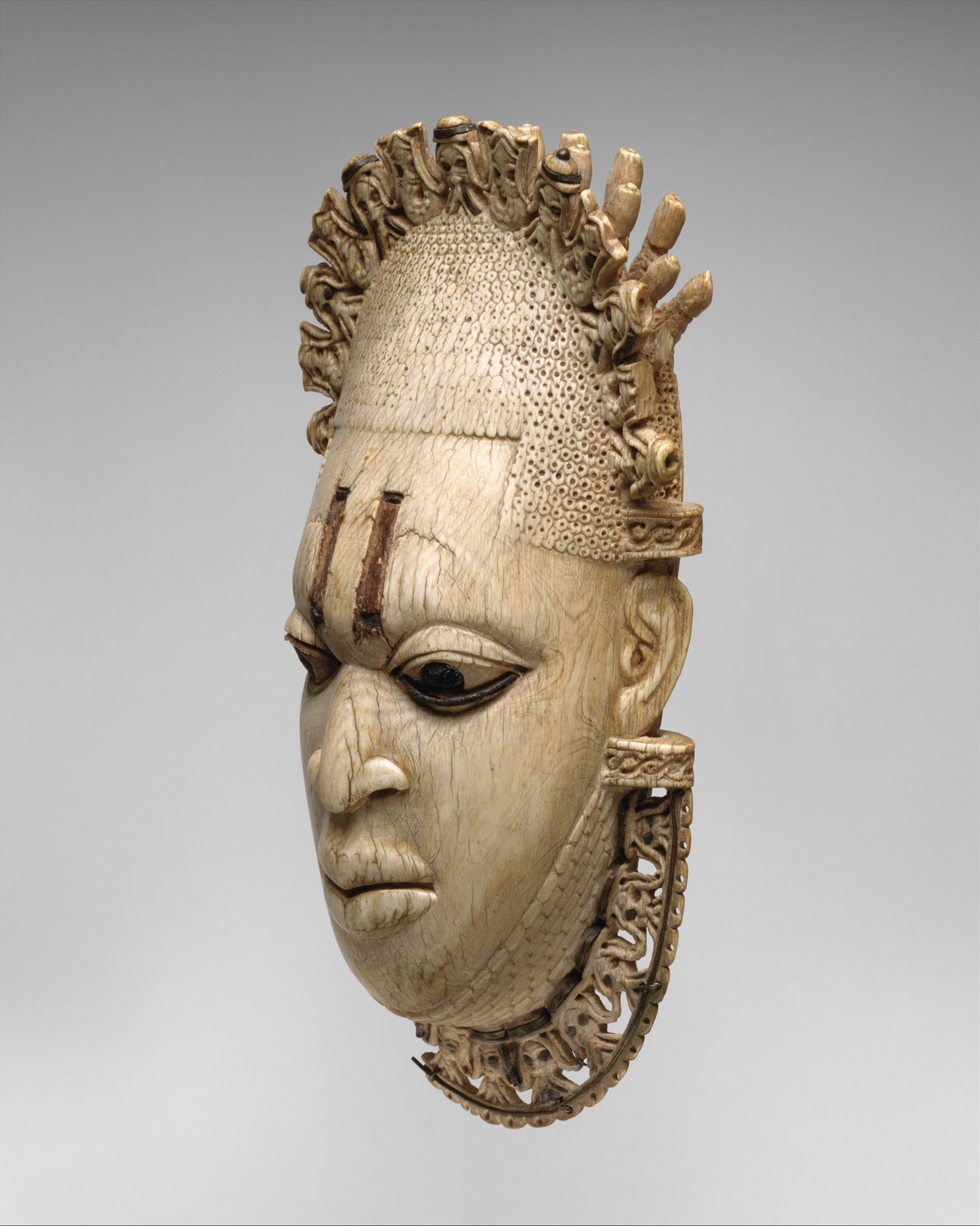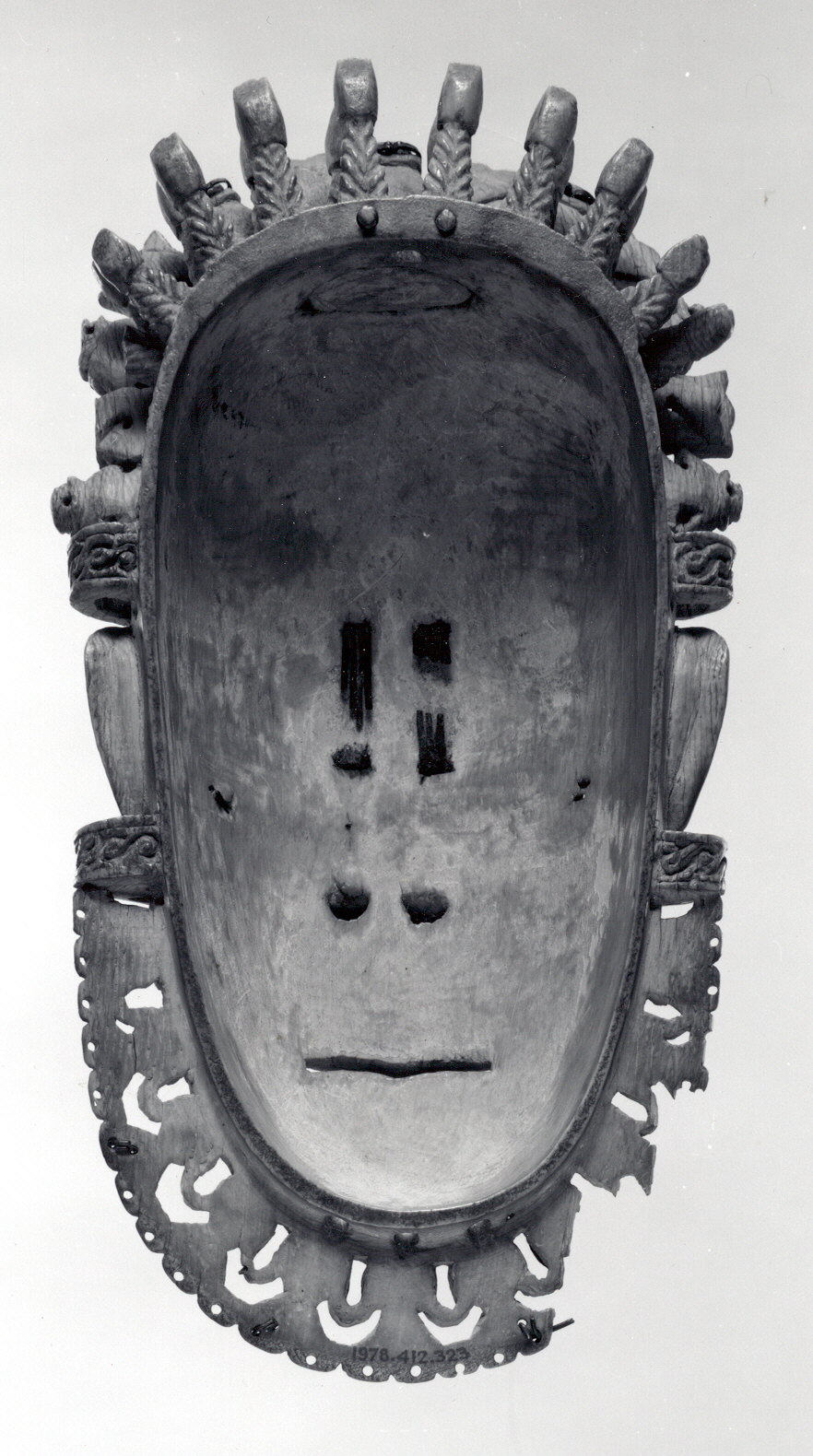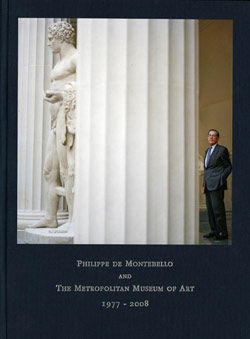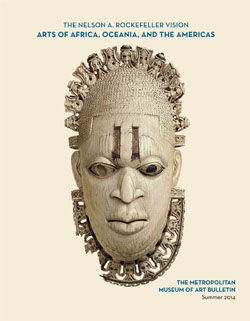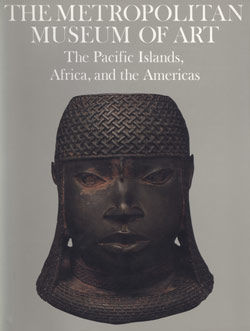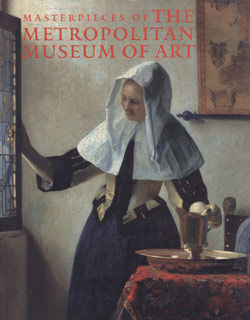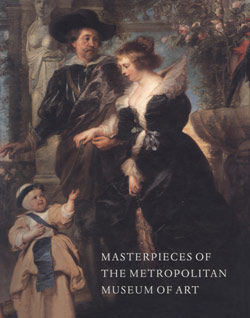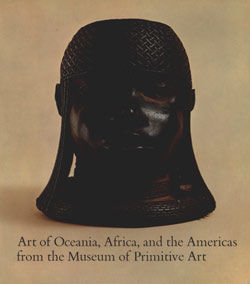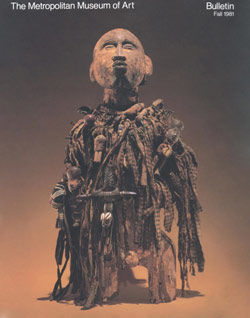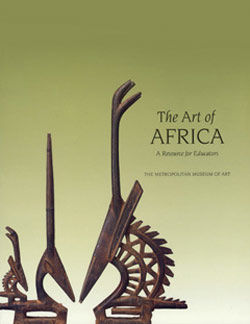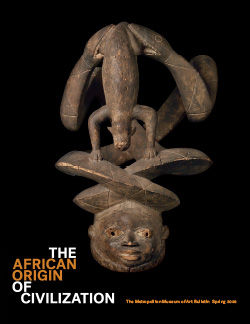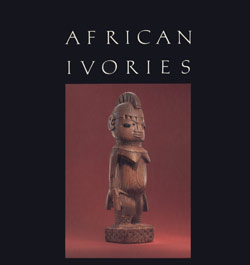Queen Mother Pendant Mask: Iyoba
This ivory pendant mask is one of a pair of nearly identical works; its counterpart is in the British Museum in London. Although images of women are rare in Benin's courtly tradition, these two works have come to symbolize the legacy of a dynasty that continues to the present day. The pendant mask is believed to have been produced in the early sixteenth century for the King or ObaEsigie, the king of Benin, to honor his mother, Idia. The oba may have worn it at rites commemorating his mother, although today such pendants are worn at annual ceremonies of spiritual renewal and purification.
In Benin, ivory is related to the color white, a symbol of ritual purity that is associated with Olokun, god of the sea. As the source of extraordinary wealth and fertility, Olokun is the spiritual counterpart of the oba. Ivory is central to the constellation of symbols surrounding Olokun and the oba. Not only is it white, but it is itself Benin's principle commercial commodity and it helped attract the Portuguese traders who also brought wealth to Benin.
The mask is a sensitive, idealized portrait, depicting its subject with softly modeled features, bearing inlaid metal and carved scarification marks on the forehead, and wearing bands of coral beads below the chin. In the openwork tiara and collar are carved stylized mudfish and the bearded faces of Portuguese. Because they live both on land and in the water, mudfish represent the king's dual nature as human and divine. Having come from across the seas, the Portuguese were considered denizens of the spirit realm who brought wealth and power to the oba.
The Legacy of Benin Court Art: From Tragedy to Resilience
At its origins, the centralized city-state of Benin was founded by Edo-speaking peoples. The accounts by official court historians and descriptions provided by visitors evoke a vibrant cultural center continually redefined by its leadership through shifting internal and external power dynamics. According to oral tradition, circa 1300, Edo chiefs are reputed to have reached out to the leader of neighboring Ife, Oranmiyan, to establish a new divinely sanctioned royal dynasty. Since then, the investiture of Benin’s rulers to the title of obas has conferred upon them at once a role of chief priest officiating in important religious ceremonies and presiding over an elaborate structure of palace officials. During the fifteenth century reign of Oba Ewuare, Benin’s armies were formed and the fortification of its capital with a massive wall undertaken. In parallel, delegations of Portuguese traders assiduously sought to secure exclusive commercial treaties with this leader of the region’s most powerful polity. At its height in 1500, Benin’s authority extended to the Niger delta in the east and to the coastal lagoon of Lagos in the west. Its major exports of pepper, textiles, and ivory were exchanged for copious quantities of imported metals. This access to an influx of brass led to an explosion of creativity by court artists who transformed it into works for the palace ranging from ancestral portraits, positioned on royal altars, to decorative plaques depicting the oba, his courtiers, and foreign interlocutors. From the earliest such exchanges, those Europeans commissioned exquisite ivory artifacts from Edo carvers for princely collections back home.
For nearly five hundred years, Benin’s independent leaders firmly established the terms of engagement with Portuguese, Dutch, and French agents and effectively represented their own interests. Despite the demands of the Atlantic Slave trade, for centuries they limited their participation to selling prisoners of war to the Portuguese. Historians have suggested that this only changed during the eighteenth century when escalation of contests among regional polities created a demand for access to European firearms. During that later period instability engendered by disputes over succession and civil war was further fueled through the exchange of captives for firearms. A number of internal and external developments that followed in the nineteenth century impacted the standing and vulnerability of Benin’s monarchs. Under Oba Adolo, the balance of power appears to have favored the more powerful chiefs and by the early years of his successor Ovonramwen’s reign, bitter feuds and seditious conspiracies divided their ranks. This shift was manifest in the increased emphasis on the oba’s ceremonial and ritual activities and the aggrandizement of chiefly residences that outstripped the palace. Concurrently significant changes were unfolding around Benin: Islam was in the ascendant in the rival state of Oyo; Christianity was embraced by the southern Yoruba; abolition of the slave trade was leading to the demise of the Itsekiri monarchy; and local British officials were increasingly determined to undermine the oba’s authority.
The British invasion of the capital of the Kingdom of Benin in 1897 was part of a campaign waged from 1892 through 1902 to forcibly bring most of the inland territory of modern-day Nigeria under British rule. With the British conquest of Benin City, Oba Ovonramwen was exiled to Calabar and soldiers plundered the palace. The brutality of the removal of its contents has forever decoupled altars dedicated to each individual oba dating from 1300 to Benin’s conquest with the specific works conceived to commemorate them. Directly following the military action some 200 Benin artifacts were given to the British Museum by the Secretary of State for Foreign Affairs while others were sold on the international art market. In addition to dealers and private collectors the major clientele at this time were newly established ethnographic museums in the West. Following Ovonramwen’s death in 1913, his son Eweka II was restored to the office within a British protectorate and prioritized a renewal of artistic patronage in Benin City. Subsequent to the nineteenth century dispersal of Benin works, awareness of their extraordinary aesthetic power, beauty, and complexity profoundly influenced Black public intellectuals. Notable among these in the U.S. were W.E.B. Dubois, Alain Locke and artists from the Harlem Renaissance on. At the same time, their relegation to ethnographic museums during the colonial era continues to reflect the legacy of their forceful removal and segregation from comparable cultural achievements by Western creators.
In 1950 a selection of Benin works were transferred through sale, exchange, and donation from the British Museum to what is today Nigeria’s National Commission for Museums and Monuments for display in Benin City and Lagos. In 1960 with the establishment of the Federation of Nigeria as a nation, Benin City became the capital of Edo State. Exemplars of this tradition today conserved at the Metropolitan Museum of Art were given to this institution in 1969 and 1991 by individuals who acquired them on the international art market to at once make them accessible to the public and celebrate their excellence. In 2016 Oba Ewuare II assumed the title of Benin’s current oba. He has noted that while such works "have come to serve as ambassadors of our culture around the world," a priority is the building of a new museum devoted to this legacy in Benin City. Designed by David Adjaye, this major cultural initiative embedded in the very fabric of the ancient city walls promises to afford expanded opportunities to understand and reflect on the significance of this living tradition at its source as well as those for international collaboration.
#114. The Director's Tour, First Floor: Queen Mother Pendant Mask: Iyoba
-
114. The Director's Tour, First Floor: Queen Mother Pendant Mask: Iyoba
-
840. Kids: Queen Mother Pendant Mask: Iyoba
Playlist
Due to rights restrictions, this image cannot be enlarged, viewed at full screen, or downloaded.
This artwork is meant to be viewed from right to left. Scroll left to view more.


